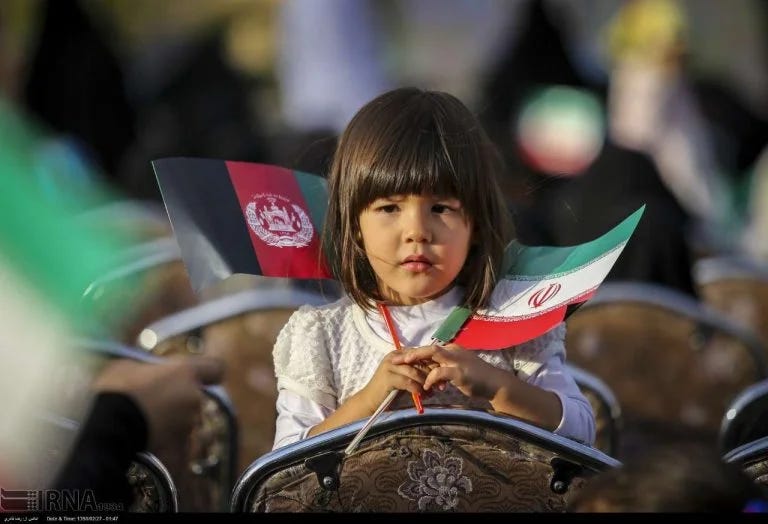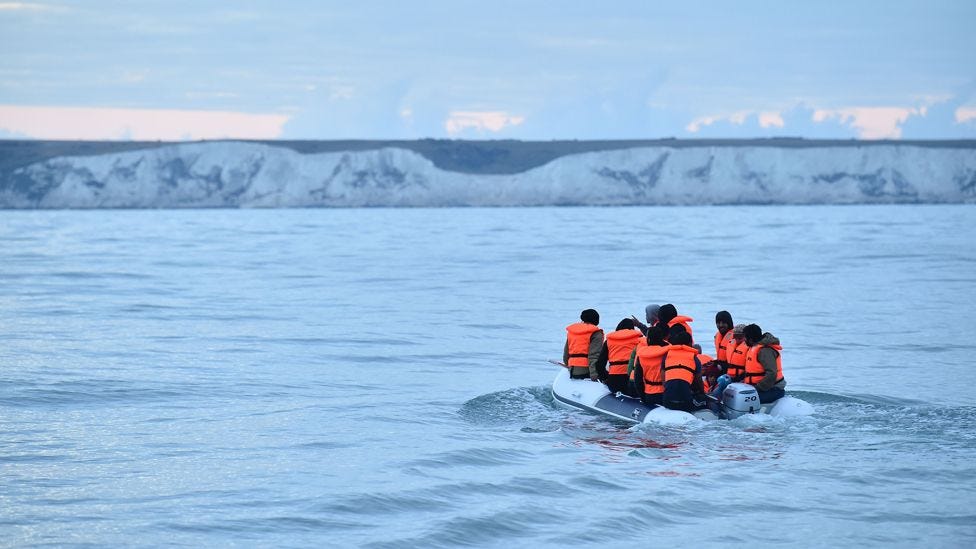Discourses of ‘Othering’ : The Suffering of Afghans in Iran
The new wave of racism against the minority raises important questions for Iranian society and its progressive movement.
The last few weeks have seen a new wave of racist attacks against migrants and refugees from Afghanistan who have settled in Iran. There is little doubt that these attacks have been orchestrated as a way of diverting attention away from all the state shortcomings and brutality especially on the anniversary of Jina and while another 17-year-old girl lies in coma after being beaten by ‘hijab patrols’. Importantly, this choreographed hatred and debate in Iran is just an example of a global trend and the ways in which political rhetoric and ideologies manufacture and guide public emotions as a way of managing and steering the country, rather than governing it. Accepting these orchestrating efforts as a given, however, should not divert attention away from the deep-seated prejudices these propaganda messages tap into - the pre-existing and unchallenged socio-cultural tropes of nationalism and supremacy over one or more ‘Others’, that become fertile ground for manufactured hate and anger.
The history of migration from Afghanistan to Iran is a long one, following series of wars and periods of unrest in the country that forced people to seek refuge or a better life on the other side of the border. But despite this long history, Afghans have been continuously and systematically held back from accessing basic rights and services in Iran: they are only permitted to work manual, low-paid jobs; there are limits on number and access of Afghan students enrolling in schools and universities; banks and welfare systems routinely deny services to Afghan customers; and the systematic disregard for their rights means generations of Afghans in Iran suffer the same unfair treatment. These are longstanding injustices and come on top of years of prejudicial narratives against the Iranian Afghan population that have portrayed them as criminals, religious fanatics, uneducated, and ‘uncultured’ which has seen the rise of racist acts and attacks on Afghans in recent years - like some locals demanding expulsion of their cities’ Afghan population, or certain entertainment complexes banning Afghans from entering their premises.
The most recent wave of attacks, however, building on these historical injustices and false narratives, has been a gush of sheer vitriol against Afghans carrying all the classic tropes of racism and xenophobia of 20th century white European politics. It is hard to pinpoint when and how this most recent wave started but there were two key moments that have come to define the discourse: first was the image of a young Afghan man in Tehran’s metro wearing a T-shirt with an image seemingly of a Taliban fighter, and second was an image of a newborn shared widely with warning of high birthrates among the Afghan population (the fake stories and narratives behind these images have already been examined elsewhere). As these images sparked a fear- and hate-filled discussions centred around worries of being ‘culturally and/or genetically replaced’ by the ‘intruders’, official hardline newspapers were publishing reports and eye-catching headlines warning about what an uncontrolled in-flow of Afghan migrants could do to the state of politics and economy in the country. The results have ranged in the past few weeks from an online campaign demanding the expulsion of all Afghans from Iran; a few street gatherings with the central demand of deporting the Afghan population; verbal and physical attacks on individuals, businesses, and homes of Afghans in different Iranian cities. Afghan residents have been talking about their fear of leaving their homes even for buying essentials, and the extra burden it has added to years of lived experience of injustice, prejudice, and discrimination they have endured.
Now the mechanisms and rationale employed by the authoritarian regime in Iran in creating a new scapegoat and guiding all the grievances and dissatisfactions directed at itself towards this new object of hatred and fear, is known and easily identifiable. And many have talked about it in recent weeks in Iranian circles - that regimes like the Islamic Republic govern by instilling fear of an obscure ‘other’ that is named and identified differently at different times based on the ideological needs of the time. These tactics, however, are not unique to authoritarian systems and are increasing with a frightening speed in democratic systems in the West. Particularly jarring in the past few weeks have been the headline-making speeches by UK ministers about immigration, using dehumanising language to talk about refugees and migrants and continuously belittling the pain and suffering that forces people to leave their homes and countries. Suella Braverman warned about an impending ‘hurricane of mass migration’ enabled by lax human right laws that are in dire need of modernisation to protect the West against ‘the existential challenge of migration’ in an era where ‘multiculturalism has failed’. The UK - a country I called home for almost 10 years - has been grappling with the issue of ‘small boats’ as the latest iteration of the migration crisis which for years has been portrayed as the defining issue behind the country’s economic, social, and political challenges. This, in many ways, is the same narrative being propagated by hardline Iranian officials - only the latter have had decades more experience of creating numerous ‘enemy Others’ to help them hold on to power, thanks to their authoritarian ideology. To make the juxtaposition of the UK and Iranian discourses even more striking, a new report by the Refugee Council has found that so far in 2023, the majority of people making the dangerous journey across the English Channel came from only five countries, the first two being Afghanistan and Iran.
The situation we find ourselves in is immensely ironic. In Iran, some of the same people who last year were singing ‘for Afghan kids’ now see Afghans as the sole source of their hardships, hardships which force many to leave everything behind and join their Afghan counterparts on a perilous journey on small boats, to a country where they are both demonised and dehumanised in the political discourse. We, Iranians and Afghans, are quite literally in the same boat - whether we talk about religious extremism governing our countries that kills women, the oppression that drives us from our homes, or the political discourse that continuously makes us into an ‘Other’ anywhere we dare to call home. The dangerous forces of racism and nationalism obscure these glaring similarities and instead pit us against each other, killing the ideals of a progressive and inclusive movement along with it.
Last year, early on in the movement, a double of the key slogan Woman, Life, Freedom was manufactured by - what later became obvious was - the Iranian regime: Man, Nation, Prosperity. This movement often feels like an aggressive dance between these two doubles and the orchestrated hatred of Afghans is the latest form this dance has taken. Brutally holding a mirror up to Iranian society - especially those who see themselves as champions of a progressive movement - it forces us to face the unquestioned beliefs and prejudices that have sustained systematic oppression in our country for decades. Afghans have rightly pointed out the striking absence of any kind of anti-racist movements in Iranian society until now, raising the important question of whether we and our movement are capable of standing up to racism and surviving this brutal dance, or whether this moment becomes the one we look back on with regret as the point of irreparable damage to the unity, progress, and ideals of a once-progressive movement.



